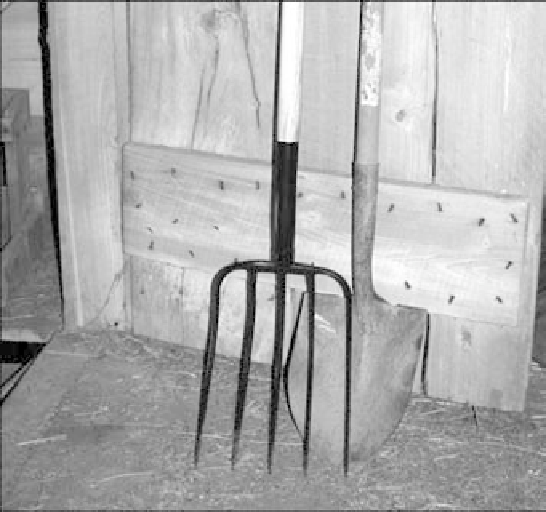Agriculture Reference
In-Depth Information
I prefer short-handled digging forks for lifting established plants, as they will help preserve more of
the root structure. I prefer long-handled digging forks that can be used when standing, for breaking
up the bottom of digging holes, and for turning over compost bins. They can also take the place of
a rake and shovel combination when cleaning out the muck from the goat pen or chicken house.
Over the Garden Fence
Digging forks can be used to harvest root crops like potatoes because the tines are less sharp than a spade
and are less likely to damage the vegetables during the harvest.
The shovel has a full blade on it and is primarily used for digging or moving dirt. The digging fork has tines
that are strong and sturdy and can be used to break up hard soil, aerate compost heaps, and many other
garden chores.
(Photo courtesy of Christiane Marshall)
Hand Weeder and Hoe
A handheld weeder is a must in an established garden area. A full-size hoe could easily chop an
established desired plant in a crowded vegetable bed or front border. A handheld weeder lets you
get close and control your deadly blows to only the undesirables.
A new favorite type of hand weeder is the cobrahead weeder and cultivator. The curved head makes
it comfortable to use and the longer digging portion of the tool means you can dig out long-rooted
















